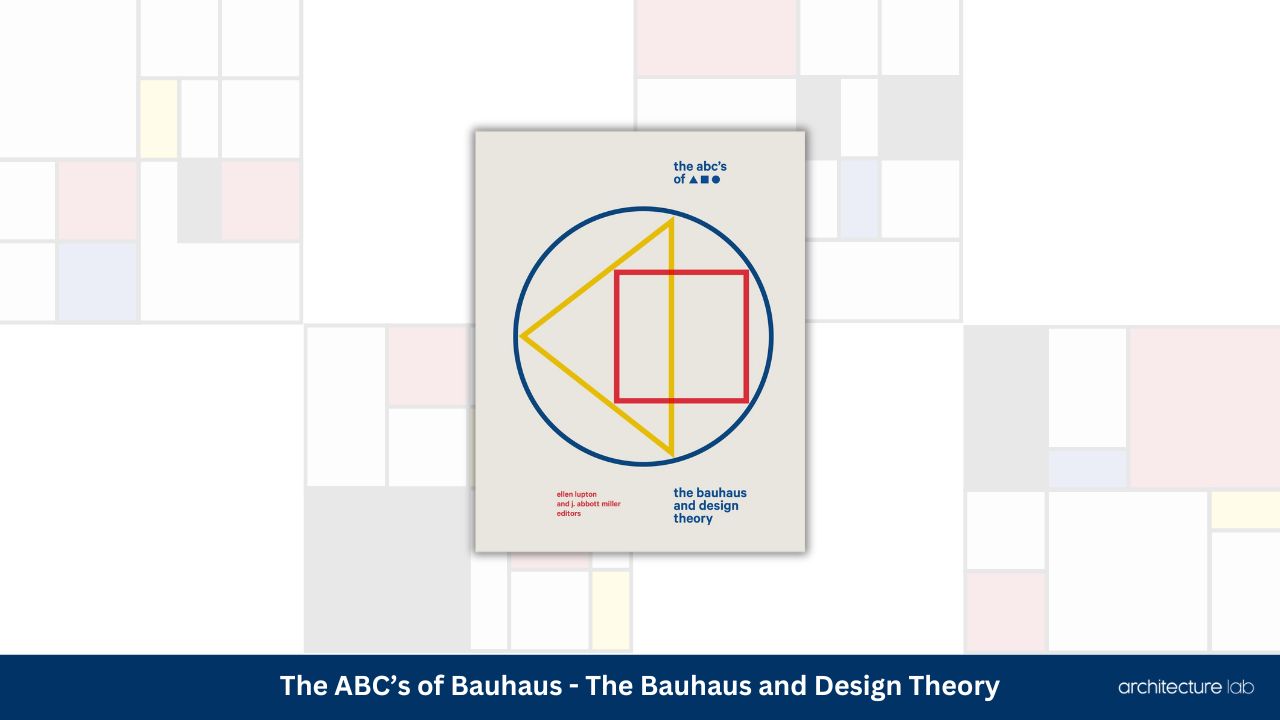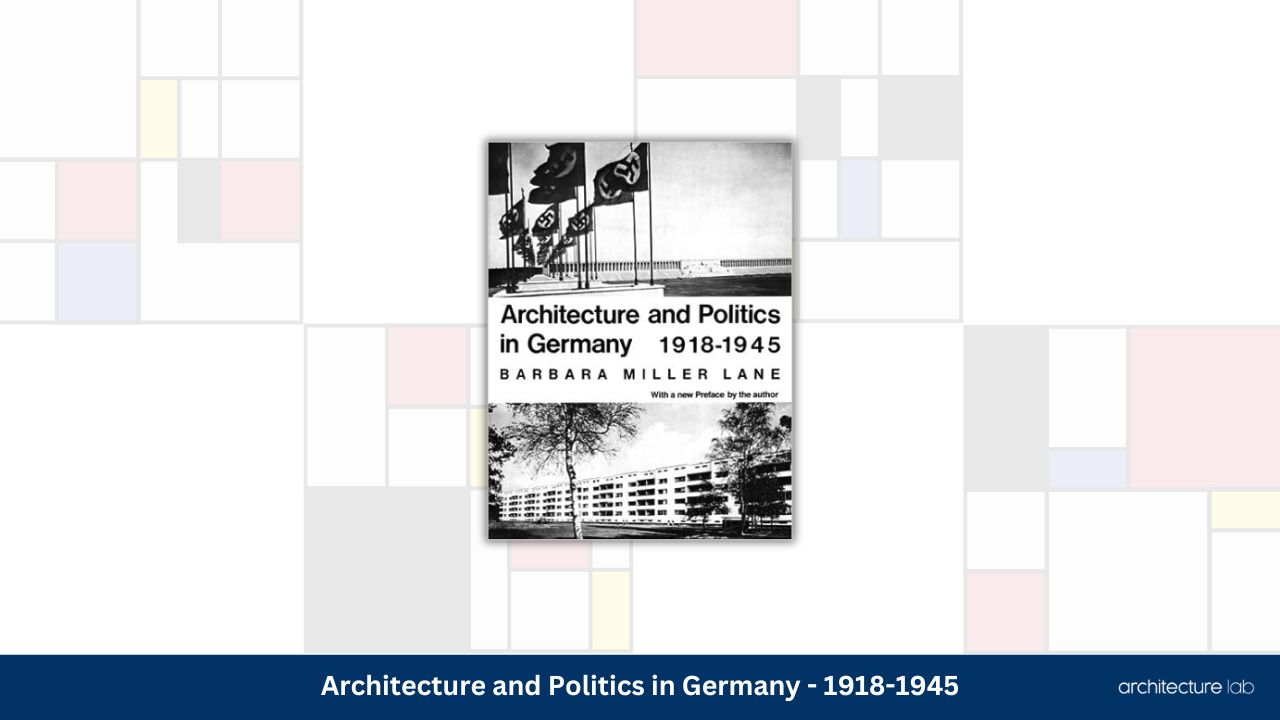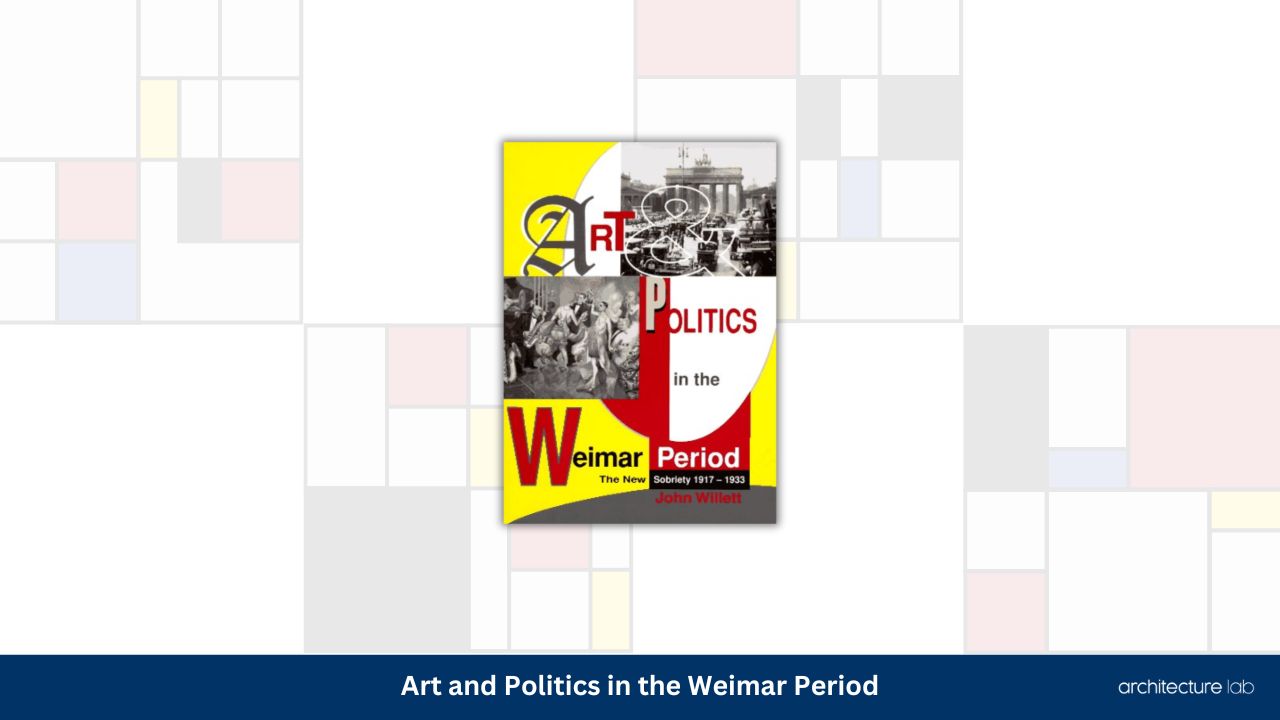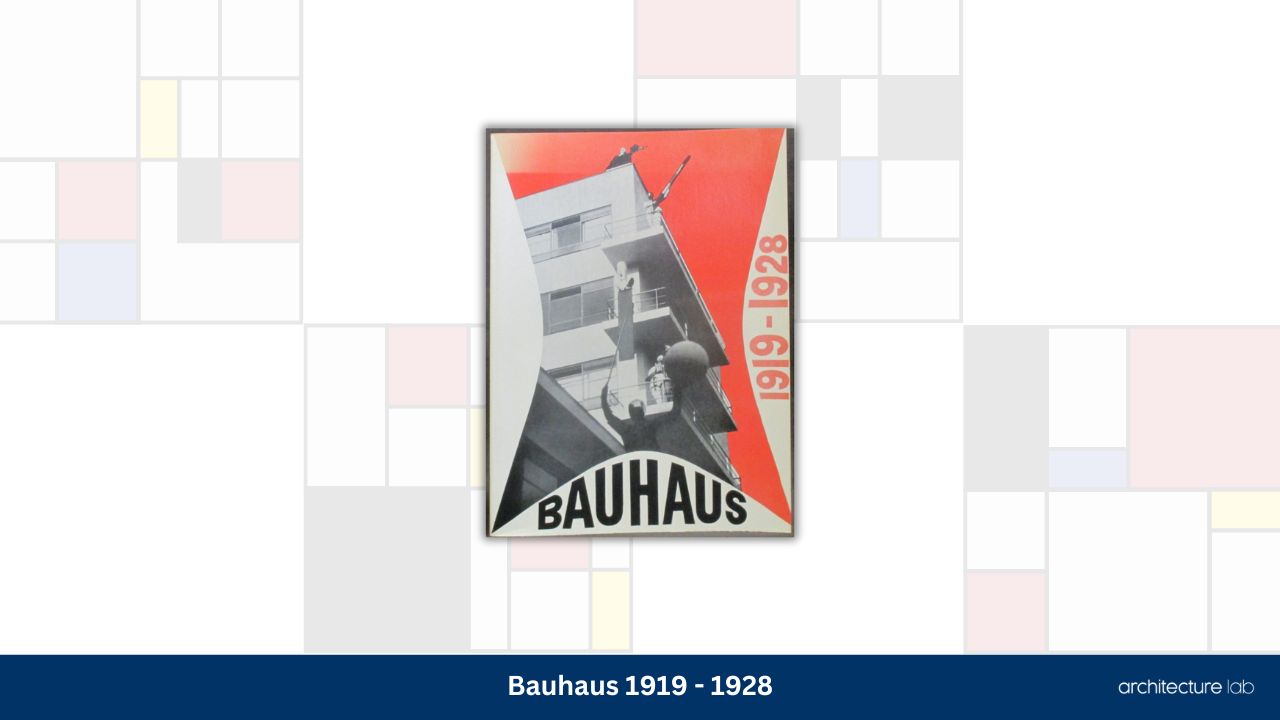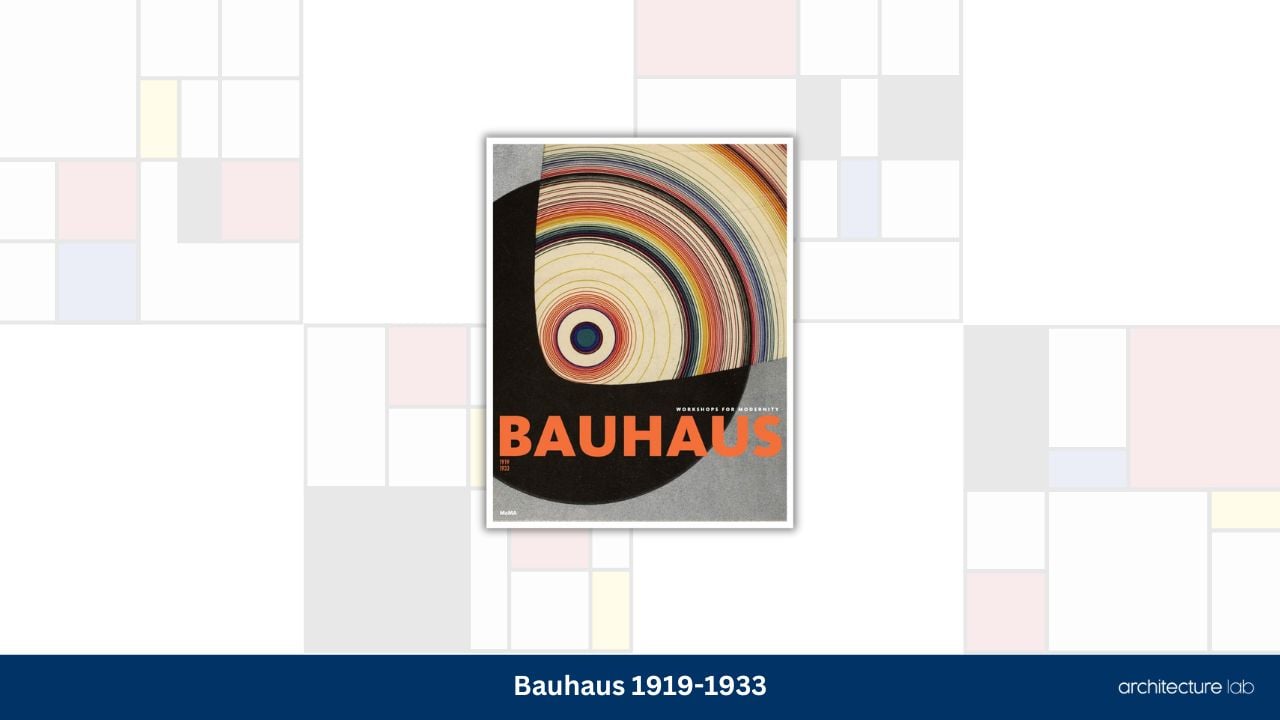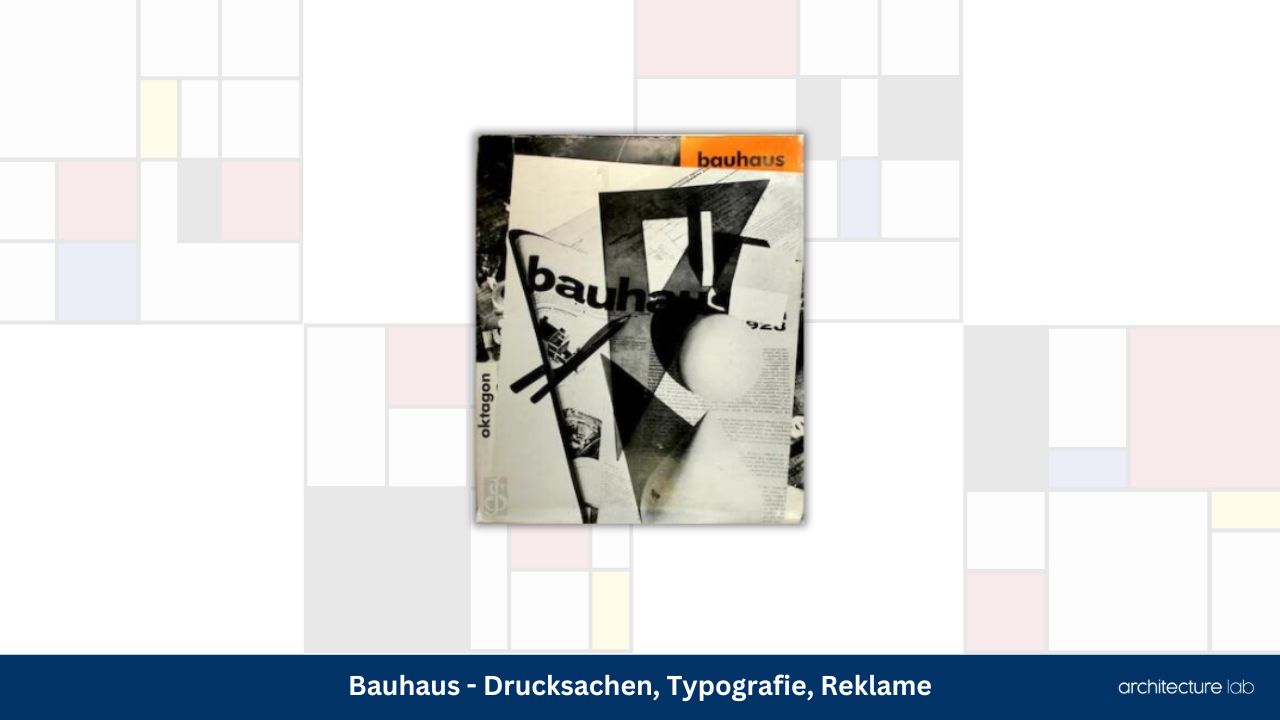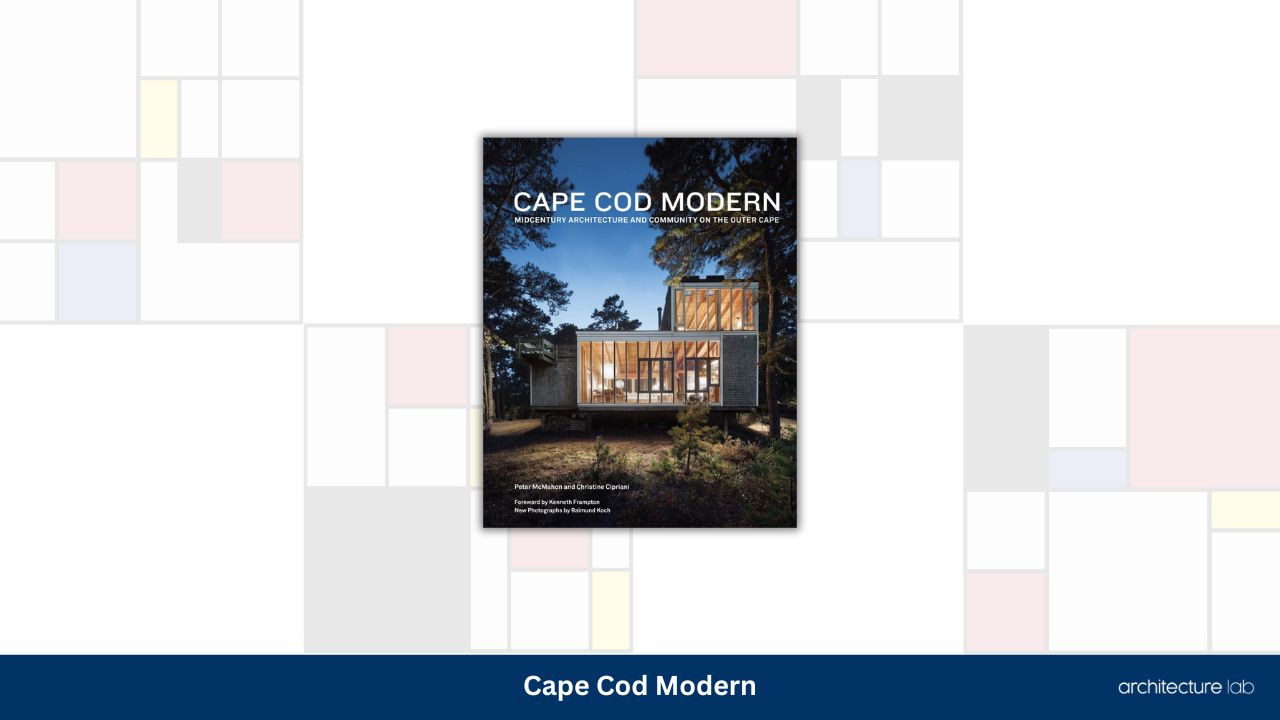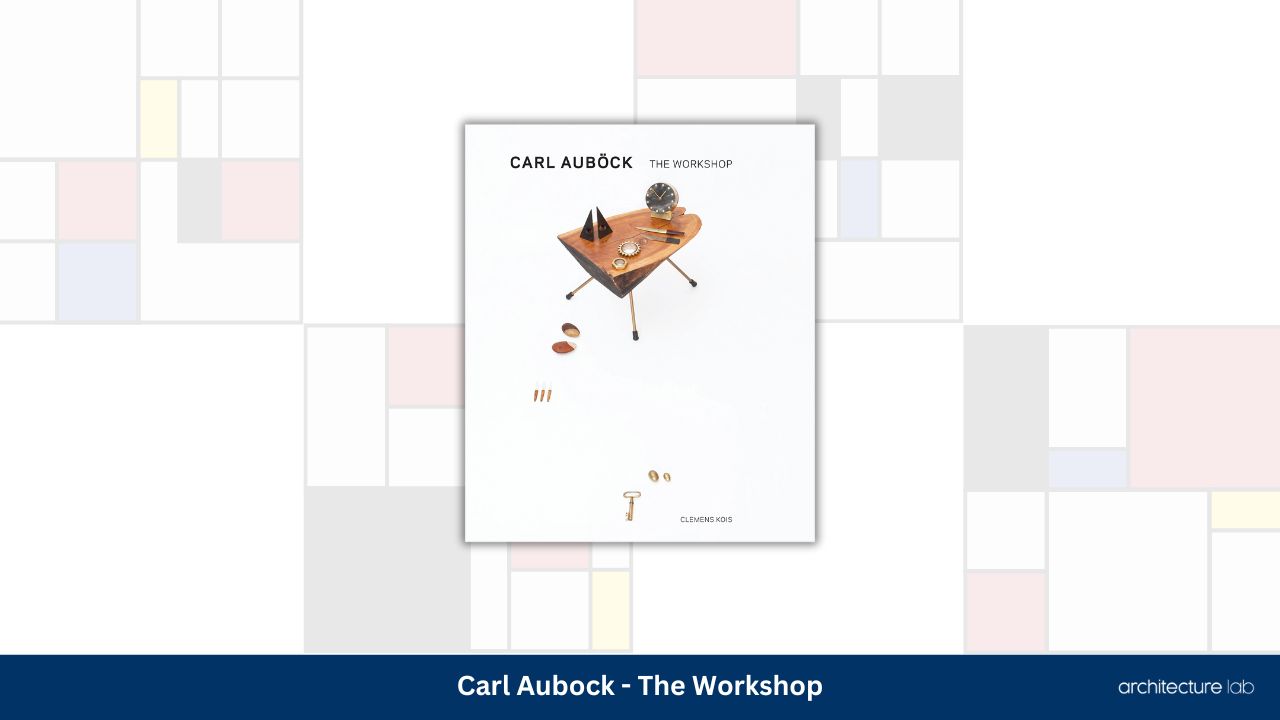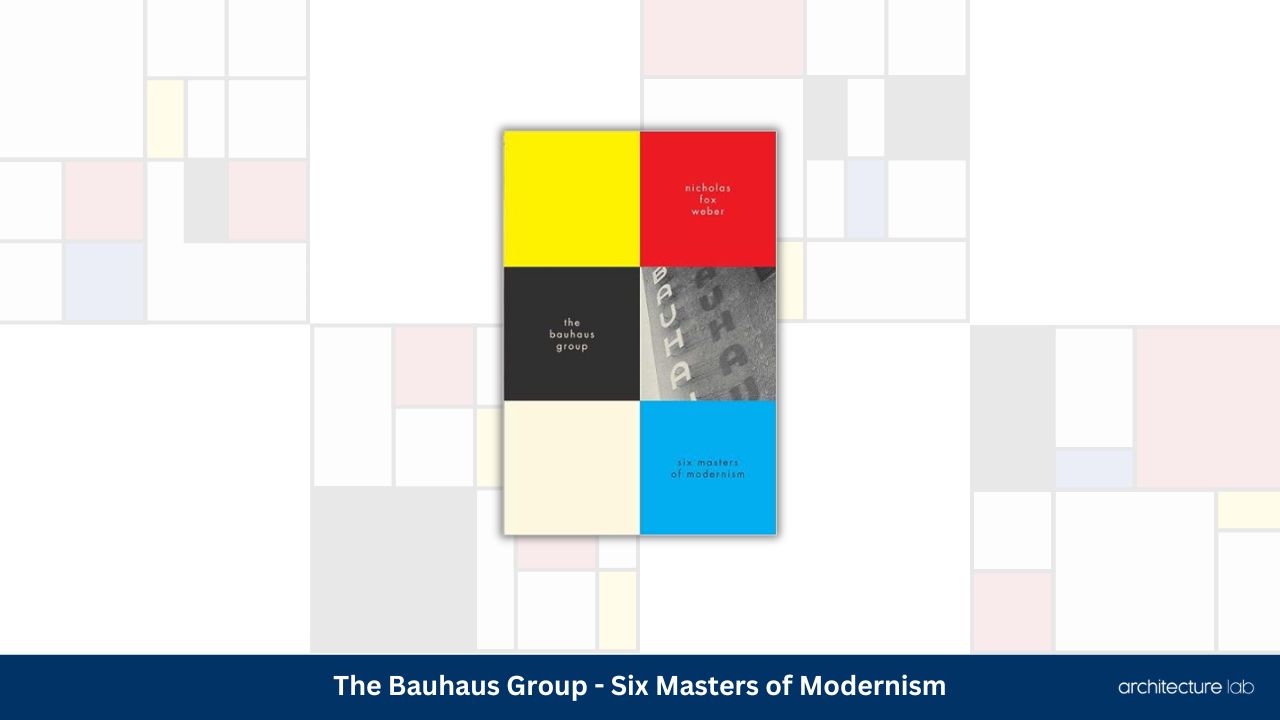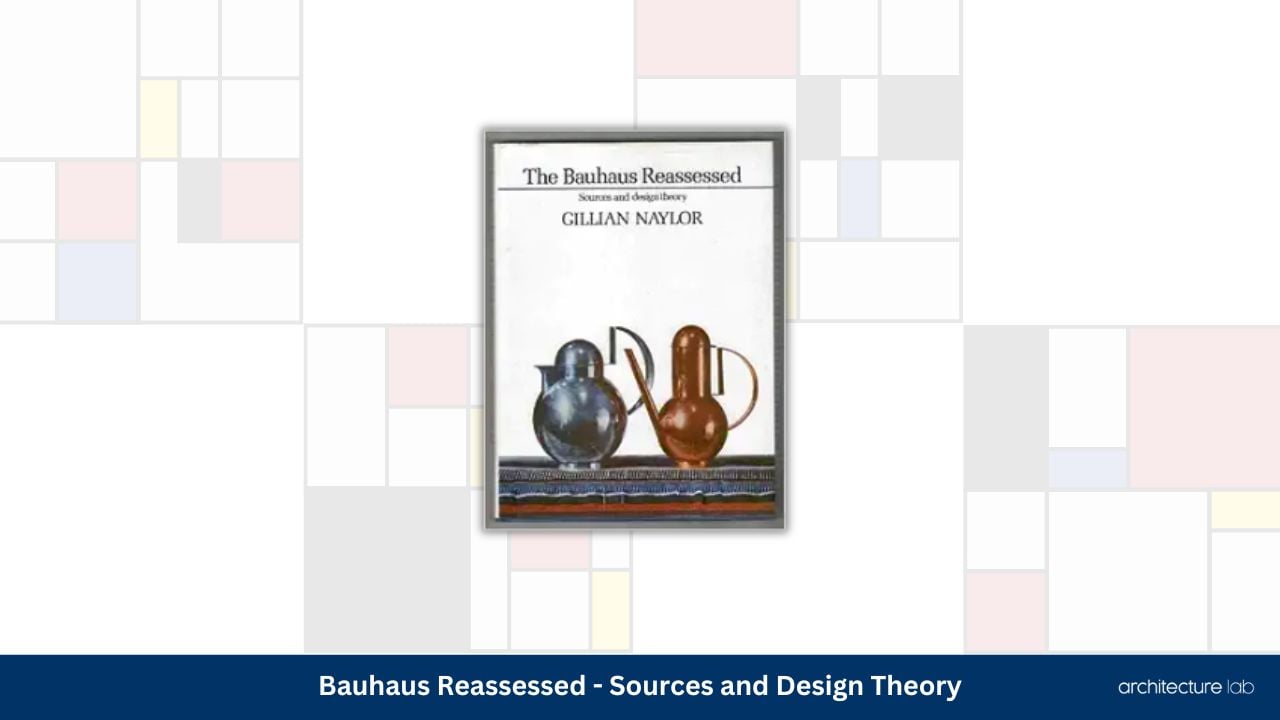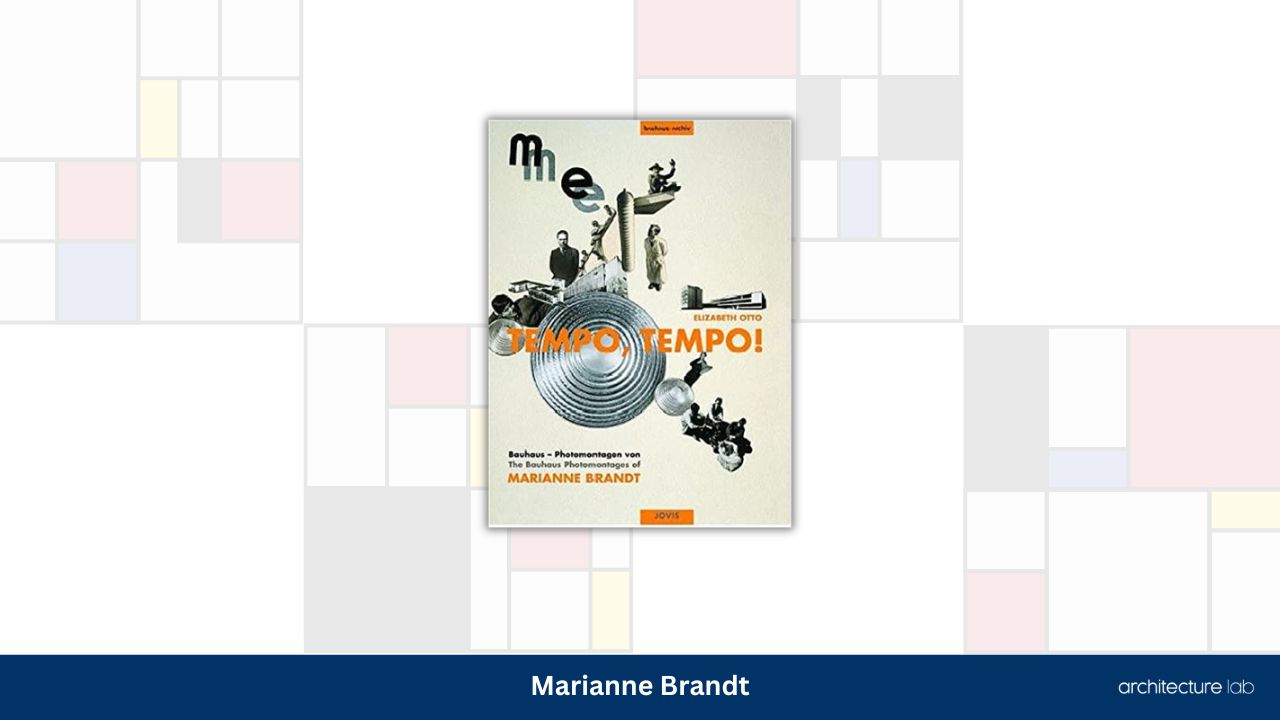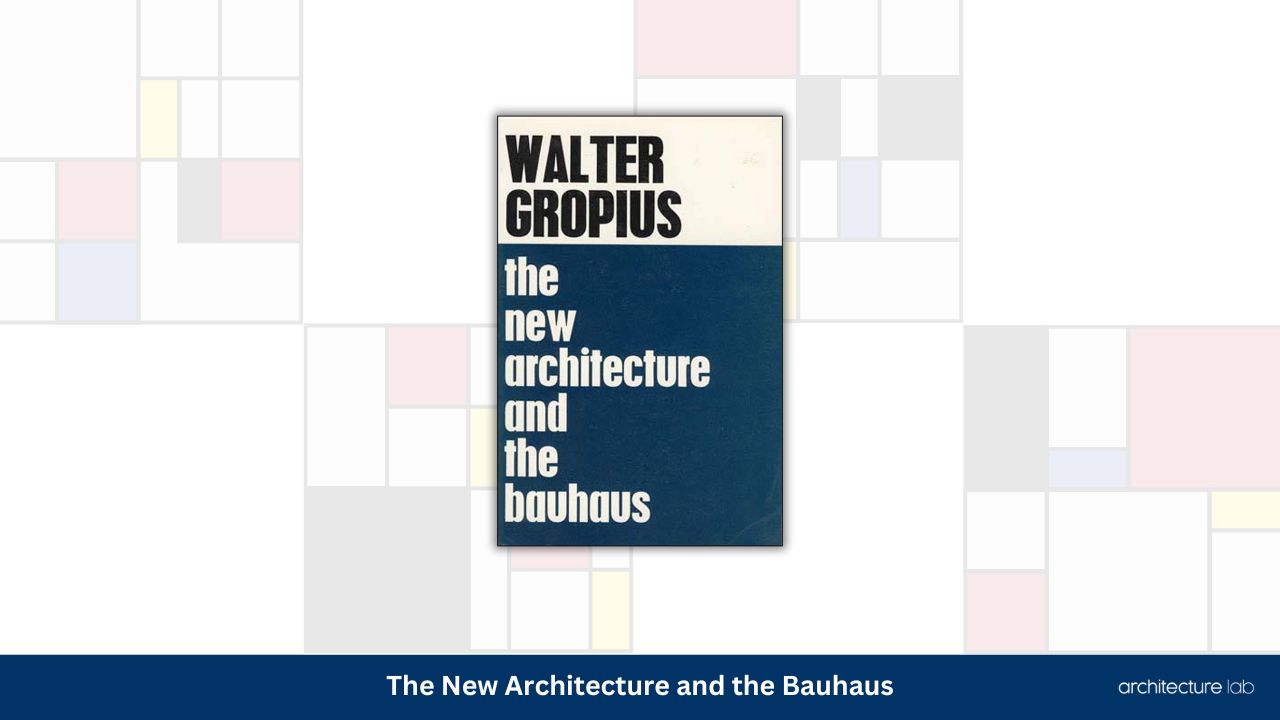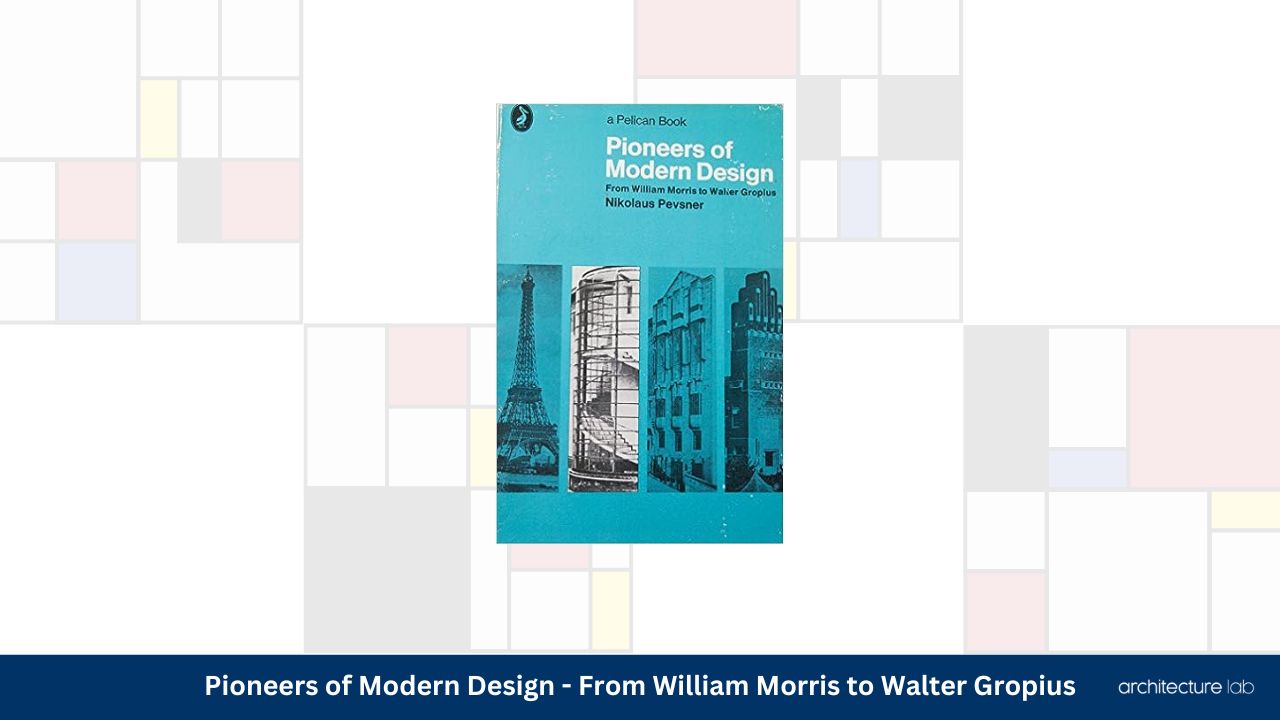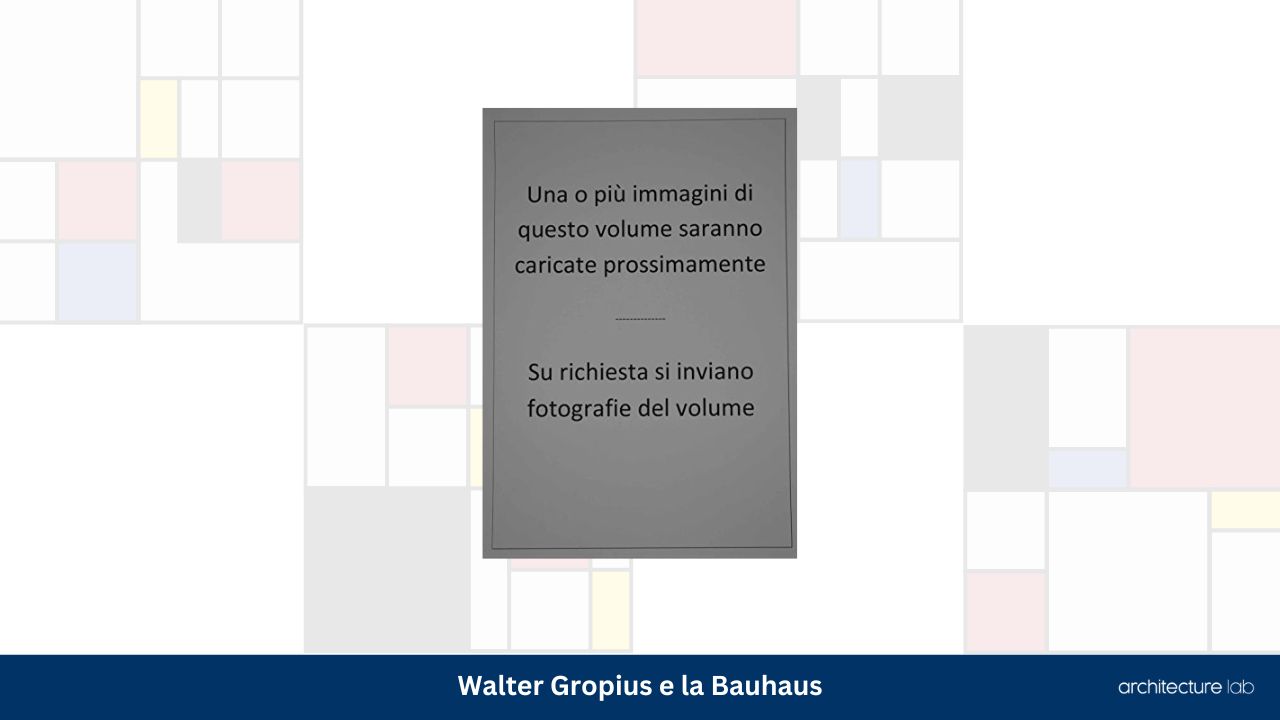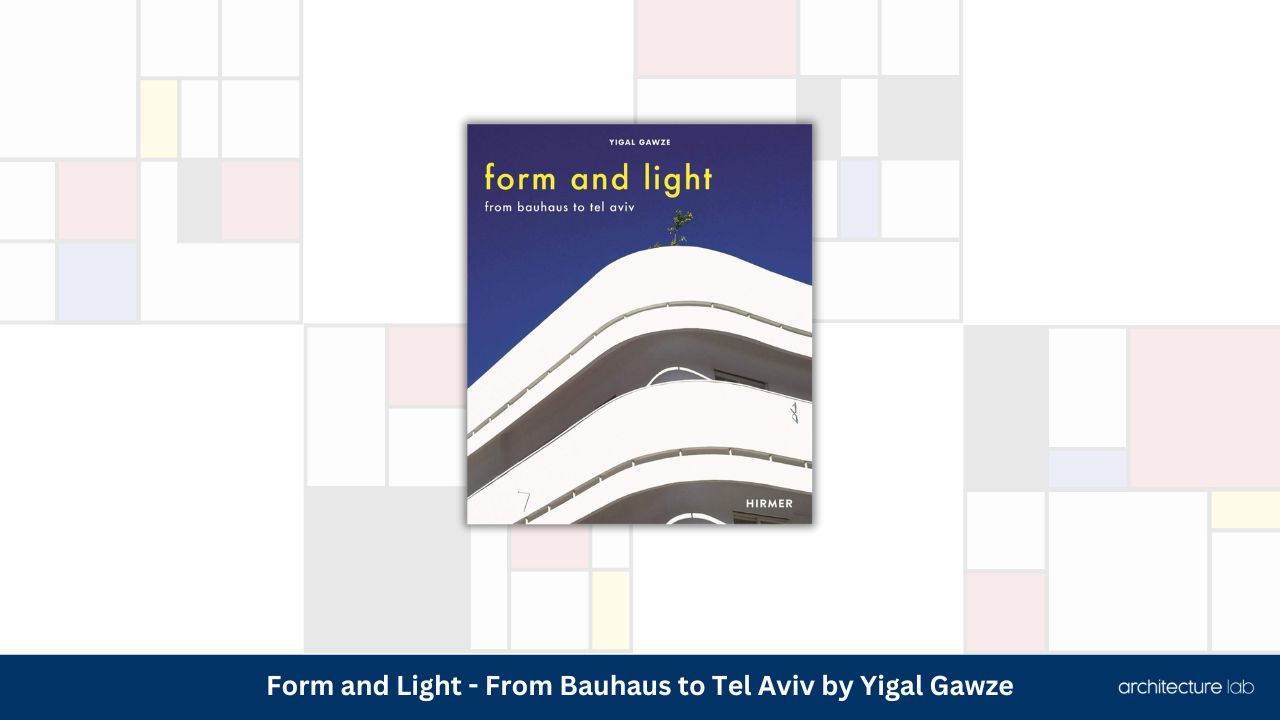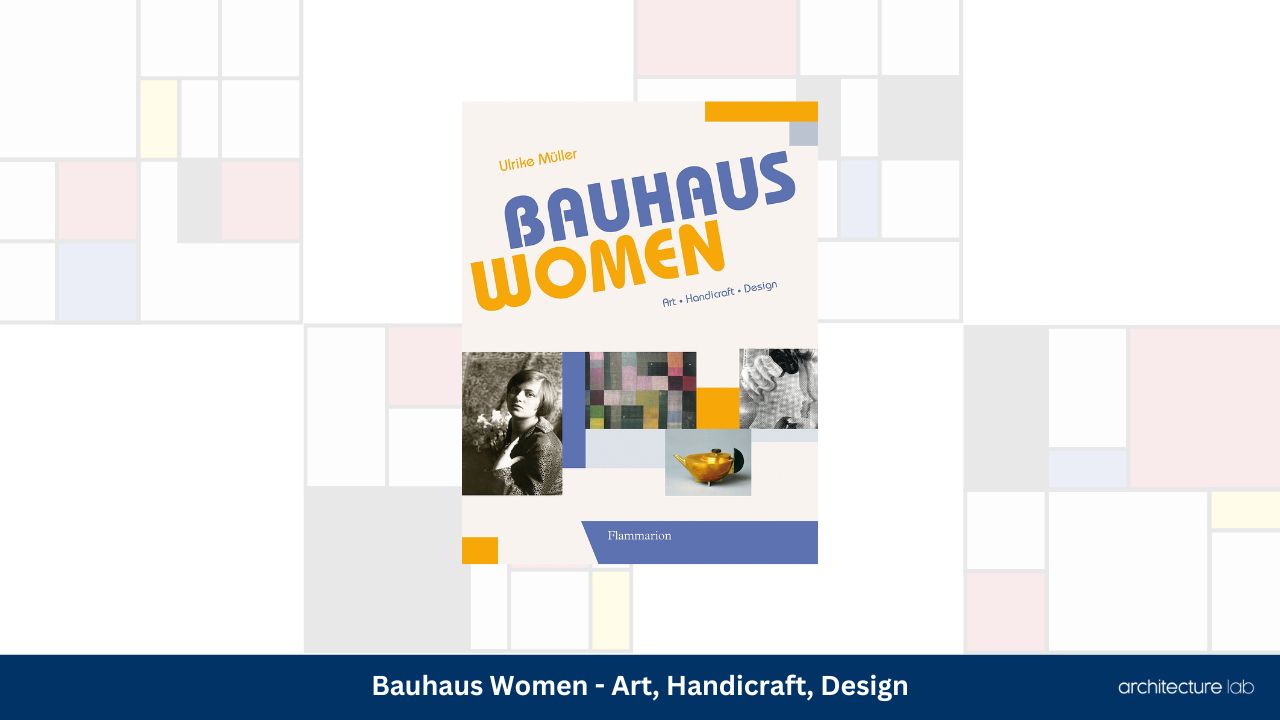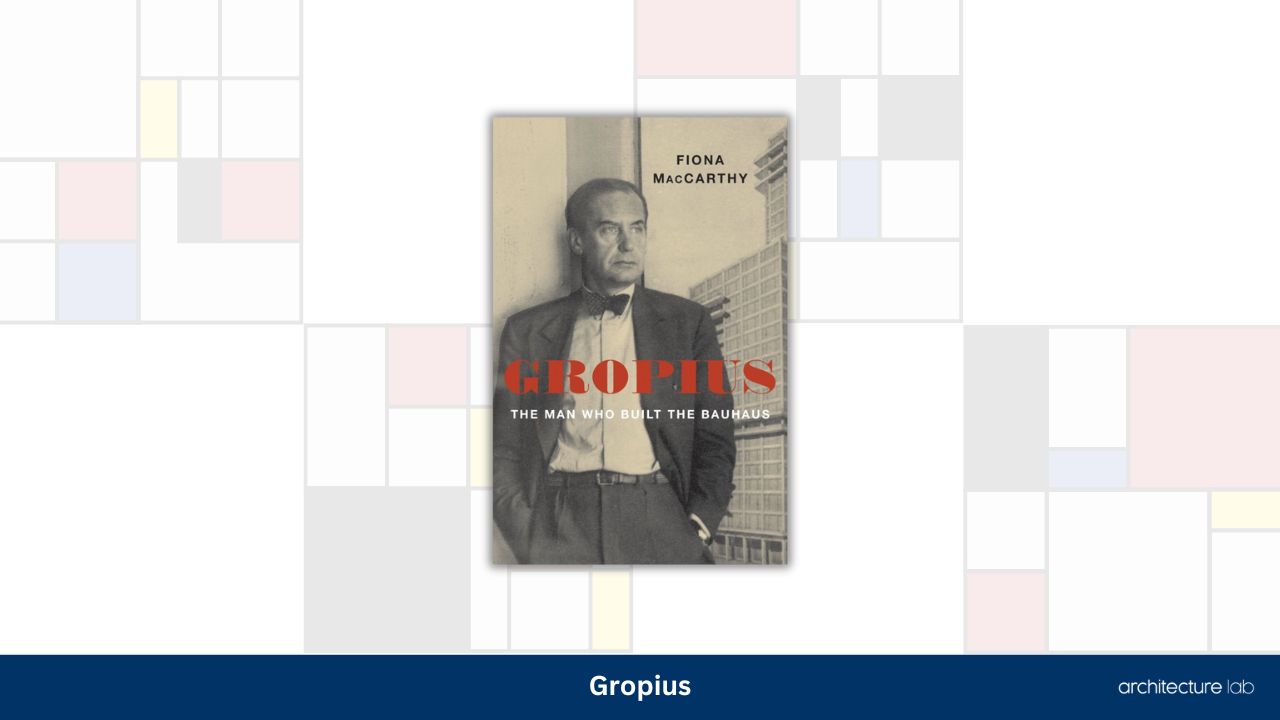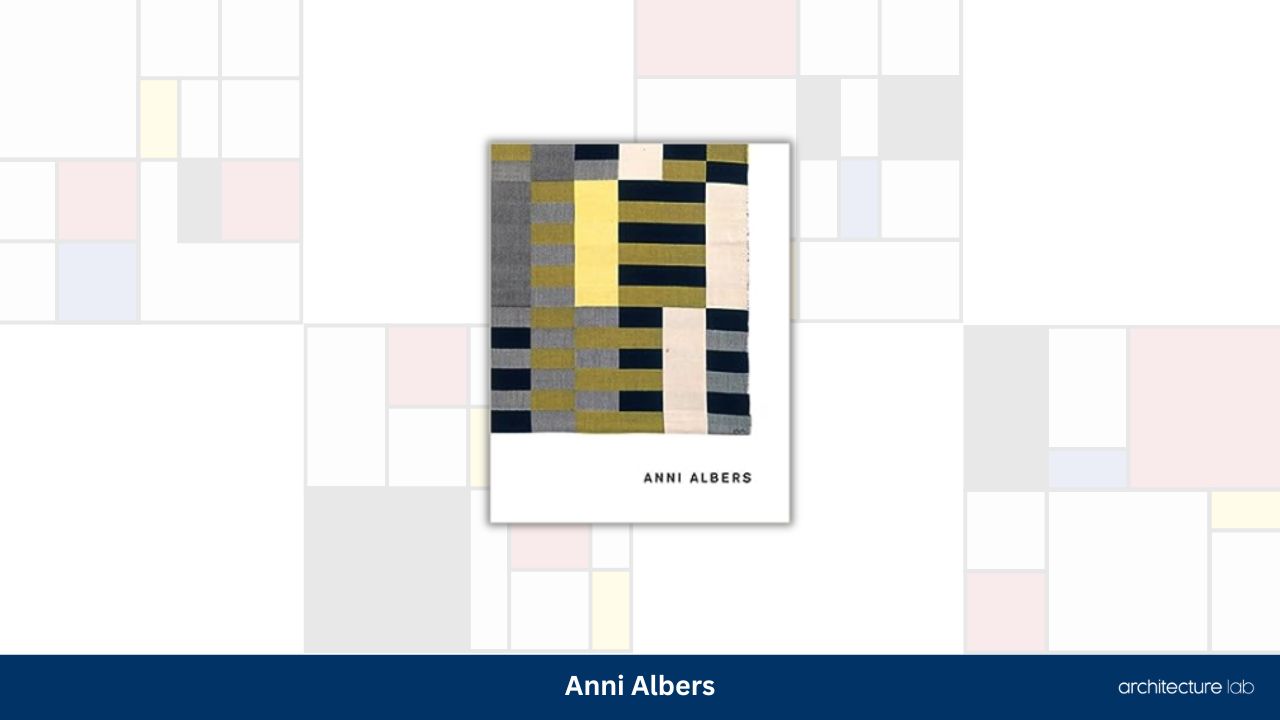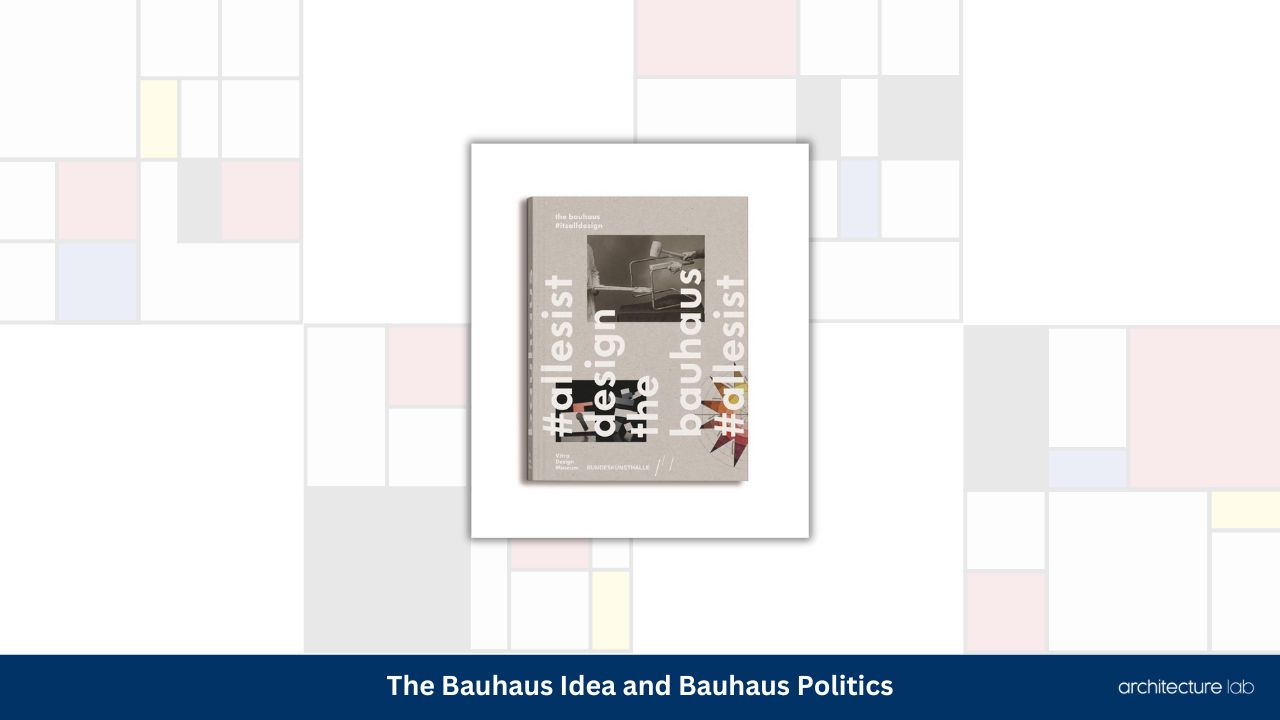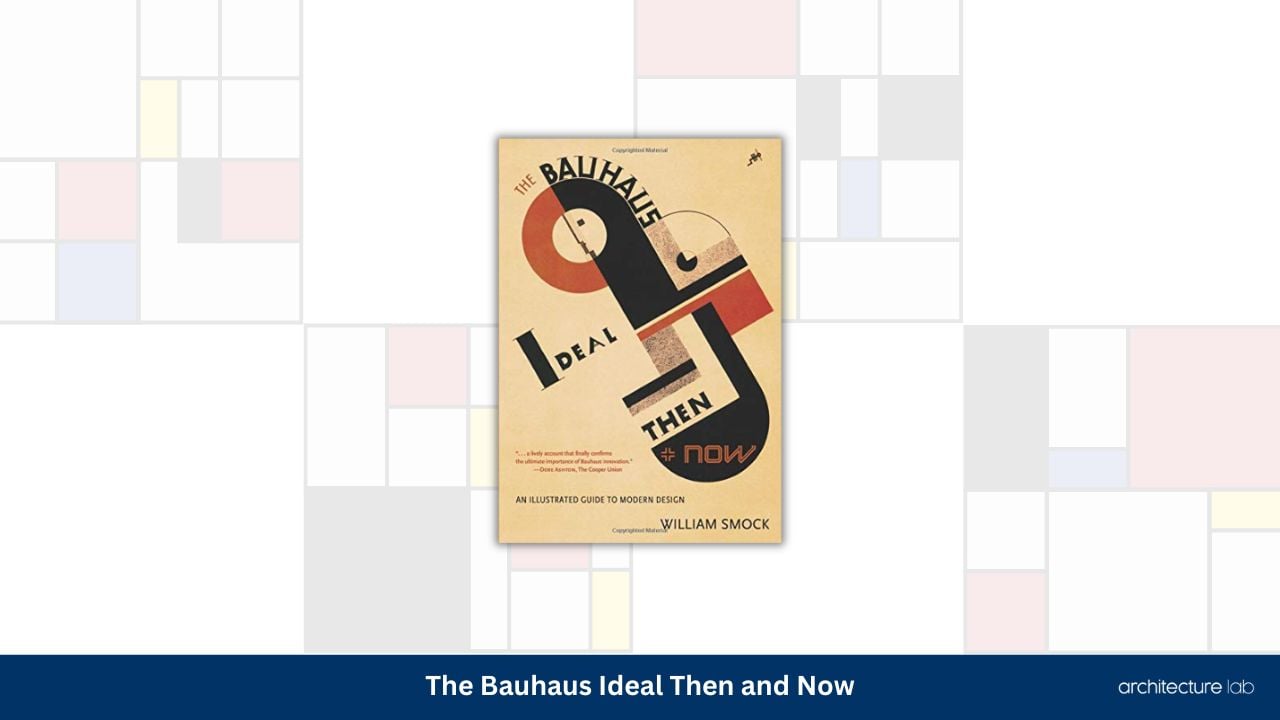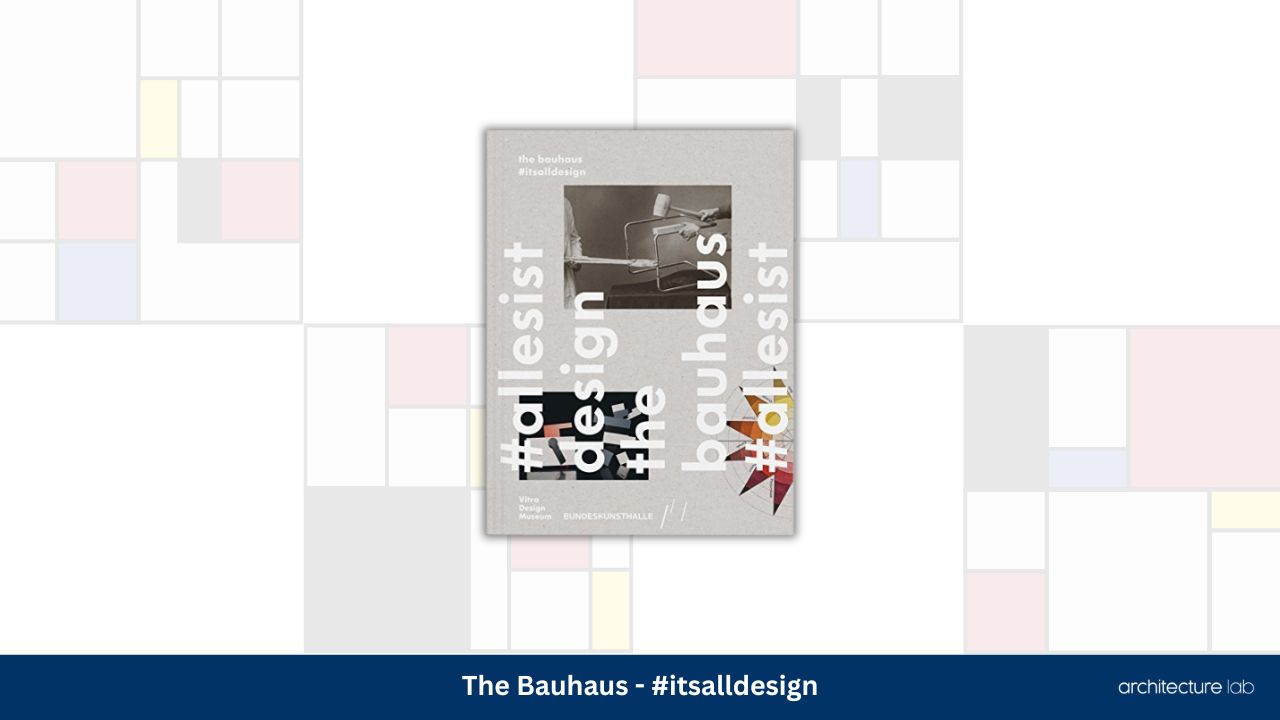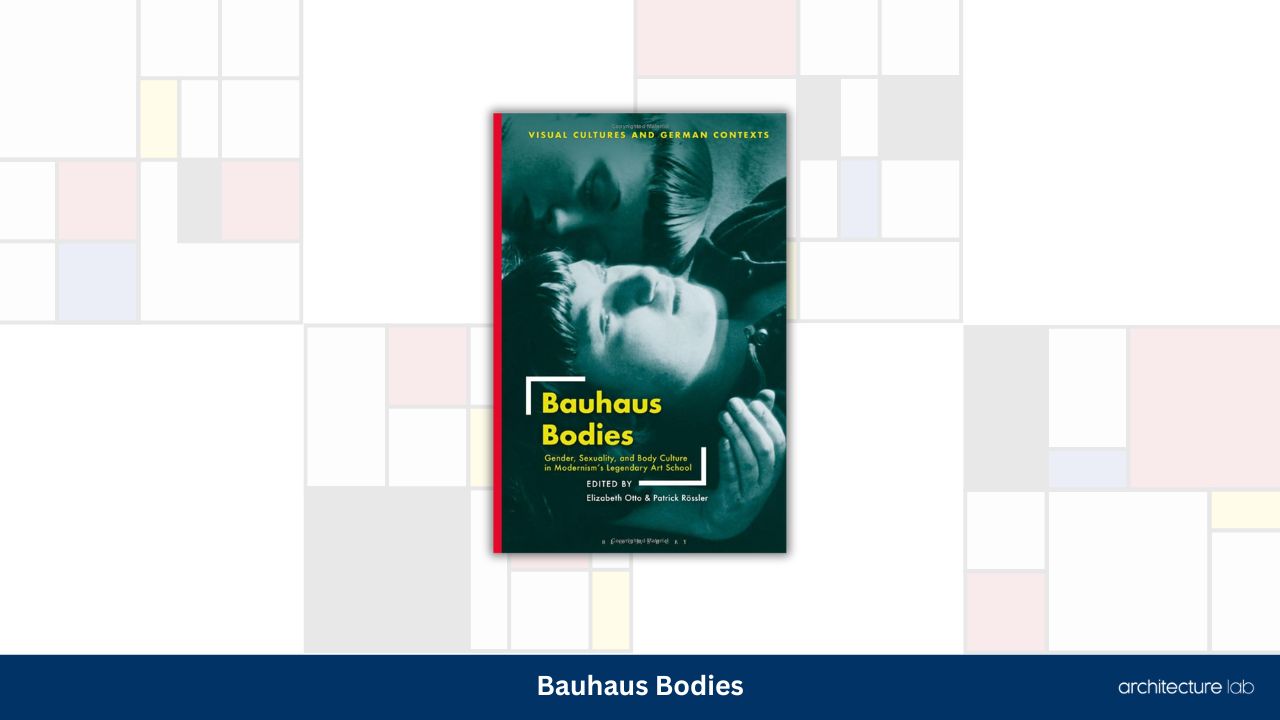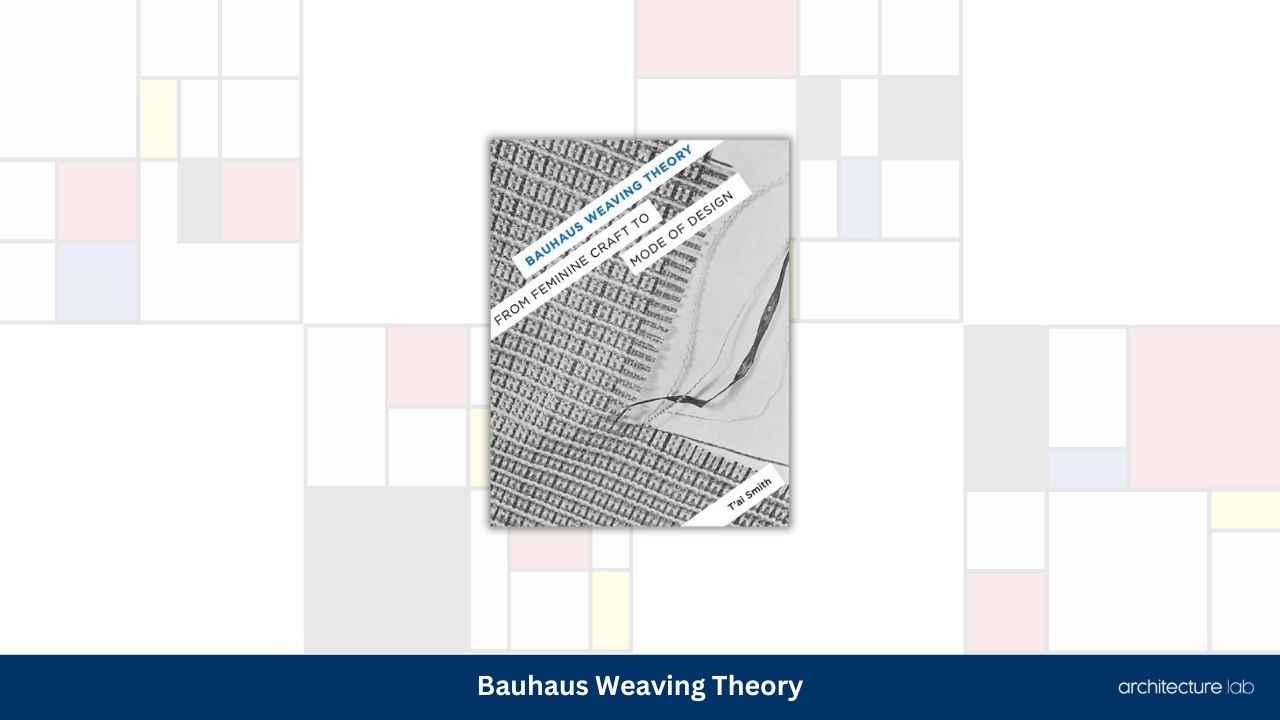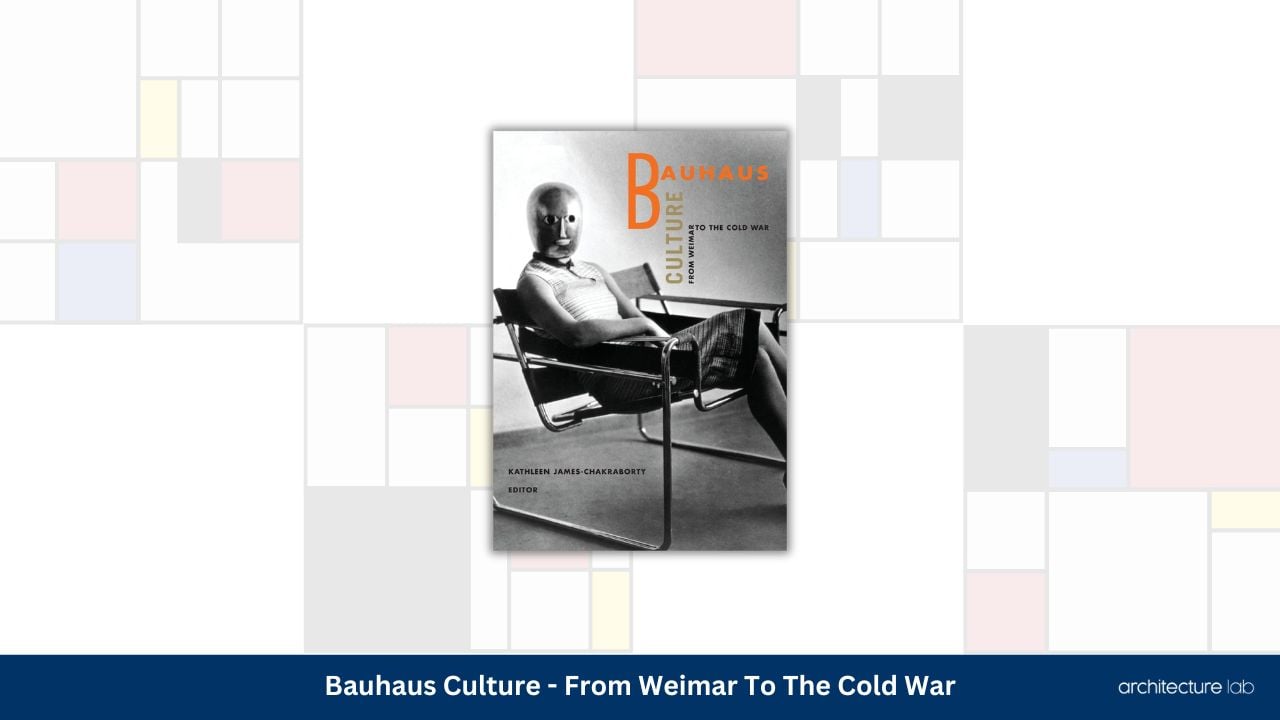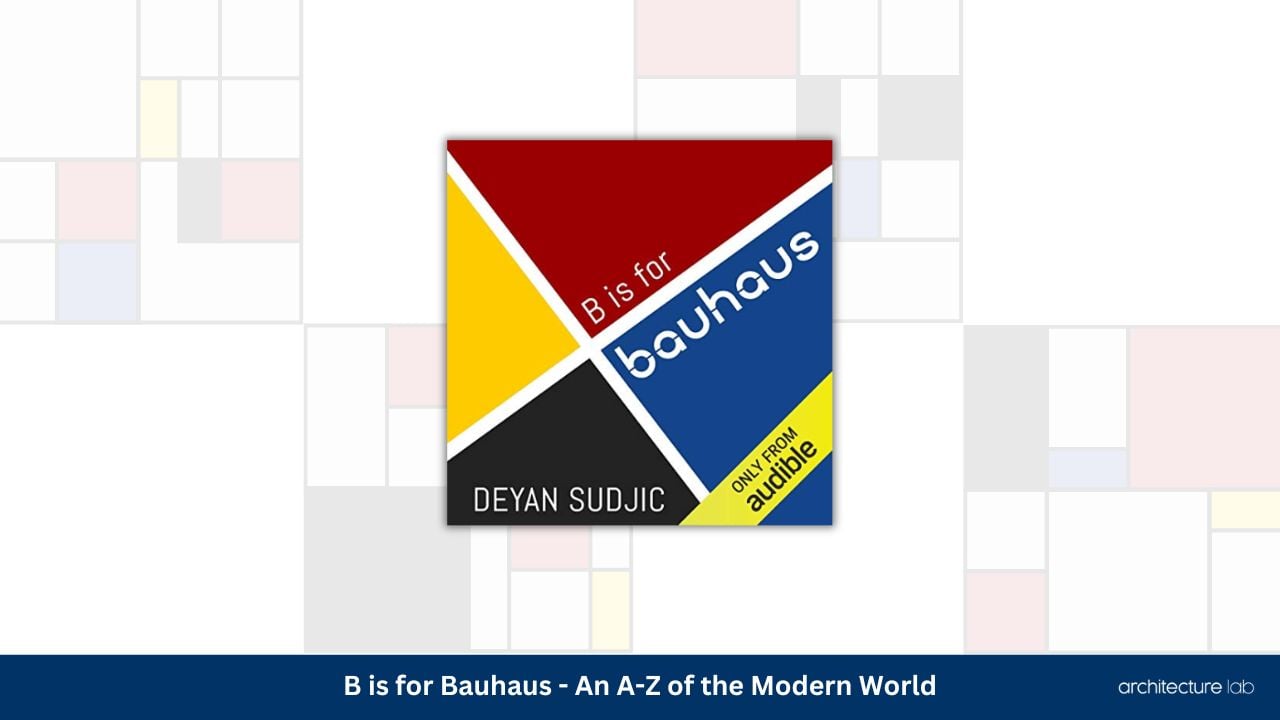The Staatliches Bauhaus continues to be one of the most influential schools in design, architecture, and craft.
Owing its origin to German architect Walter Gropius, one of the pioneers of modernist architecture, the Bauhaus school professes integration of ostensibly varied disciplines, such as craft, fine arts, and architecture, to create Gesamtkunstwerk, a ‘complete work of art.’
Unfortunately, Bauhaus, an incredible thing, existed at an incredibly unfortunate time. Most of the modern world could not escape the scourge of World War II, and the Bauhaus school was one of the casualties, shutting shop in 1933, owing to pressure from the beastly Nazis.
Bauhaus is a complex and almost mystical school to learn about, so learning about it can prove challenging. Where do you start? What do you refer to? Fortunately, a fair number of books have been written about it, and they’re the best place to start.
Again, choosing from the immense number of books can be difficult, so we’ve taken the liberty of telling you about the good ones, so you can pick the right one and learn all there is to learn about this wonderful school.
So let’s get started!
Best Bauhaus Books
Here is the list of the 28 best Bauhaus books that capture the essence of this renowned design school and its lasting influence on the world of art and design.
1. 50 Bauhaus Icons You Should Know – Best for Introduction to Bauhaus
Written by Josef Strasser, this complete work features the Bauhaus school’s greatest hits in chronological order. It features 100 color illustrations and 50 non-color ones. The works of several masters, such as Albers, Kandinsky, Moholy-Nagy, and Klee, are present. Published by Prestel, this should make for the perfect starting point for your Bauhaus journey.
2. The ABC’s of Bauhaus: The Bauhaus and Design Theory – Best for Design Theory Enthusiasts
Authored by Ellen Lupton and J. Abbott Miller, this book comes with a beautiful cover and aims to introduce the reader to the basic tenets of Bauhaus design.
It is written in essay format and compares Bauhaus to other schools from a doctrinal and fundamental perspective, tracing Bauhaus’ evolution and history. The book even references psychoanalysis! It is suitable for those who are familiar with Bauhaus and want a deeper understanding of it.
3. Architecture and Politics in Germany: 1918-1945 – Best for Political Context Insight
Authored by Barbara Miller Lane, this book perhaps exemplifies the interdisciplinary nature of Bauhaus best by comparing and contrasting the world of politics with that of architecture.
The book explores the oppressive nature of the Nazi regime and how the oppression spilled over into architecture as well, with them deeming Bauhaus “art bolshevism.” This was a part of their campaign in 1933 to eliminate “modern tendencies in art.” An interesting read for politically-inclined readers.
4. Art and Politics in the Weimar Period – Best for Interdisciplinary Perspective
Written by John Willett, the scope is of this book is incredibly broad. The book covers theatre, music, fine art, architecture, and, of course, Bauhaus.
The author explains the political trends in Nazi Germany and their impact and influence on the fields mentioned above. The scourge of Nazi Germany’s commitment to stripping the nation of beautiful art before the war eventually reduced the remnant to ash is perhaps best explained in this book.
5. Bauhaus 1919-1928 – Best for Authentic Bauhaus Insights
Edited by the great Walter Gropius himself, this book is an absolute gem. Spanning 224 pages which contain 550 (!) illustrations, the text restricts its scope purely to Bauhaus (compared to others, which frequently digress). It is best considered an account of the development of Bauhaus throughout its subsistence, though one of the most accurate accounts as it features inputs from over a dozen teachers, including Klee, Schlemmer, Iten, Albers, Breuer, and many more.
6. Bauhaus 1919-1933
Published in 2009 by The Museum of Modern Art to accompany an exhibition, this book contains two comprehensive essays by Barry Bergdoll and Leah Dickerman, curators of the concerned exhibition, apart from short essays by influential scholars and experts on the subject. It also features 400 color photos of Bauhaus design along with documentary images to complement the chronological account of Bauhaus’ history. This is perhaps one of the most authoritative books on Bauhaus.
7. Bauhaus: Drucksachen, Typografie, Reklame
This book by Gerd Fleischmann takes an offbeat approach to documenting the history and spread of Bauhaus. Featuring 400 black-and-white photographs, it tracks how Bauhaus was presented to the general populace via newspapers, postcards, letterheads, posters, etc.
This book should make for a good read for someone who is either familiar with or uninterested in the history of Bauhaus, as it is more interested in the commercial and aesthetic aspects of it.
8. Bauhaus: Weimar, Dessau, Berlin, Chicago
Published by one of the most credible sources, the MIT Press, it documents internal communications such as minutes of board meetings, private letters, etc. of the Bauhaus greats to provide an insight into its true nature.
It also features draft designs, models, etc., and documents how Bauhaus was presented to the public. One of the most comprehensive books on Bauhaus, it is incredibly detailed and provides a rare insight into the mystical world of Bauhaus.
9. Cape Cod Modern
It is not common knowledge that Walter Gropius, in 1937, rented a house in Cape Cod which would soon become a retreat for the Bauhaus greats. Bauhaus eventually spread around the area, which became a hub for talent. The book features the stories of people who became into contact with Bauhaus and became inspired by it, so inspired, in fact, that they went on to create amazing designs themselves.
10. Carl Aubock: The Workshop
Bauhaus spread to Vienna thanks to Carl Aubock II, who attended post-WW1 sessions of the Bauhaus and brought the knowledge back with him to the famous Werkstätte. Aubock went on to create beautiful designs which symbolized Bauhaus’ philosophy perfectly.
Unfortunately, most of Werkstätte’s works remain in elusive private collections, but this book features them in incredible detail for the reader to drool over. It makes for an interesting read on this offbeat influence of Bauhaus.
11. The Bauhaus Group: Six Masters of Modernism
Amidst the stream of individual men and women at the Bauhaus were Josef and Anni Albers, the only artistic couple there. A textile artist, she married the professor, who was an expert in glass, wood, metal, and photography.
This book tells the story of these masters, along with those who they shared a workspace with, Gropius, Klee, Kandinsky, and van der Rohe (six in total). The author is the director of the Albers Foundation.
12. The Bauhaus Reassessed: Sources and Design Theory
Written by Gillian Naylor and published in 1985, this book is a fairly detailed yet straightforward account of Bauhaus’ achievements and features works of almost all the masters, such as Klee, Albers, Schlemmer, Stolzl, etc. It also dives into Bauhaus’ aims and objectives, methods, and achievements while analyzing the fundamentals of its theory as well.
13. Marianne Brandt
Written by Hans Brockhage and Reinhold Lindner, this book traces the life and work of Marianne Brandt, a German Bauhaus student who went on to head the metals department of the Dassau Werkstätte. The book features her timeless teapot design on its cover, which is a testament to her commitment to minimalism and modernism.
14. The New Architecture and the Bauhaus
Written by the legendary Walter Gropius himself, this book contains Gropius’ theory of design and architecture when it was in its early stages. It was written while he was the director of the Weimar and the Dessau Bauhaus from 1919 to 1928 and features a dust-jacket design by Laszlo Moholy-Nagy. Published by the credible MIT Press.
15. Pioneers of Modern Design: From William Morris to Walter Gropius
Written by Nikolaus Pevsner and originally published in 1936, this updated text features the original content along with some significant additions, including colored illustrations and short essays on key concepts and movements surrounding the Bauhaus school. The book also features Pevsner’s views on how Bauhaus is essentially a synthesis of three major concepts: Morris’ work, the work of 19th-century engineers, and the ‘new art’ movement.
16. Walter Gropius e la Bauhaus
This book explores the influence the periods immediately preceding and succeeding the Bauhaus movement had on Bauhaus itself. Walter Gropius’ work is weighed against the work of the previous century and its transformation and endurance into the next century is also traced. This book offers a perspective into the Bauhaus movement which is very wide in scope and is seldom found in other books.
17. Form and Light: From Bauhaus to Tel Aviv by Yigal Gawze
While we have already discussed Bauhaus’ spread from Germany to Cape Cod and eventually to the rest of America, it is a little-known fact that the best examples of Bauhaus architecture can be found in Tel Aviv. Yigal Gawze includes 100 colored illustrations to prove the point that, thanks to the Bauhaus ideology, Israel features some of the world’s best architecture.
18. Bauhaus Women: Art, Handicraft, Design
While most of Bauhaus’ masters were men, that does not mean that women did not play an influential role in the evolution of its ideology. This book by Ulrike Muller celebrates the women of Bauhaus’s 20 most influential and respected female artists, including the aforementioned Anni Albers, and also throws the limelight on some talented yet underrated female artists.
19. Gropius
Written by Gilbert Lupfer and Paul Sigel and published by Taschen, this book celebrates the life and genius of Walter Gropius, who probably needs no introduction at this point! It explores 20 of his most complex projects. Apart from including projects such as the Dassau home, this book, interestingly, also measures Bauhaus’ impact on the International Style architectural movement.
20. Anni Albers
We have briefly mentioned Anni Albers twice in this article; however, that should not be taken to mean that her contribution (and presence) weren’t unique to Bauhaus. If you wish to learn more about the only woman in Bauhaus who studied there with her husband, this book by Ann Coxon highlights her work and includes comments by experts from around the world.
21. The Bauhaus Idea and Bauhaus Politics
As you may have noted by now, because of the restive times Bauhaus existed, it was always subsisting on borrowed time. This book contrasts the purity, ingenuity, and impact of the Bauhaus idea with the internecine political atmosphere that surrounded Bauhaus. Éva Forgács discusses everything, from the departure of Gropius as director of Bauhaus to the latter’s eventual closure in 1933.
22. Bauhaus Architecture 1919-1933
This book by Hans Engels, a photographer, is an interesting take on capturing and preserving the essence of Bauhaus. Unlike other works, which aim to document the works, history, and environment of Bauhaus, Engels concerns himself with photographing the remaining Bauhaus-style houses in areas like Prague, Barcelona, and Vienna, covering all, famous, lesser-known, major, and minor projects.
23. The Bauhaus Ideal Then and Now
This book by William Smock is described as a “guidebook and picture-book,” which, we think, is an apt description for it as it takes the reader on a journey in Bauhaus, comparing its tenets as they were then and how they are now. There is no shortage of eye candy, making this one of the most well-rounded accounts of the brilliance of Bauhaus.
24. The Bauhaus: #itsalldesign
As you may have guessed from the title, this book is a modern take on the idea of Bauhaus and contemporary art, design, and architecture. The book discusses the “extended concept of design” as propounded by the Bauhaus greats. But, the essence of this work lies in its comparing and contrasting Bauhaus’ ideas of design with modern trends in design, especially design that pervades the electronic space. An excellent critical analysis of Bauhaus.
25. Bauhaus Bodies: Gender, Sexuality, and Body Culture in Modernism’s Legendary Art School
Probably one of the more ‘vibey’ books in this list, this book analyses the impact of Bauhaus, as a thought process, as a way of life, on fields very loosely connected to it, such as health, lifestyle, work methods, ethics, etc. Written by Elizabeth Otto, it also brings the women of Bauhaus into the spotlight, at times even subjecting them and their work to scrutiny.
26. Bauhaus Weaving Theory: From Feminine Craft to Mode of Design
Most of us seldom stop to think just how flexible and adaptable Bauhaus is, and how its philosophy, if desired, can be applied to every area of life. Weaving may not be considered as anything more than a pass time for grandma, but when exposed to Bauhaus’ magic, it can become a structured discipline, and all of this is perfectly explained in this book by T’ai Smith.
27. Bauhaus Culture: From Weimar To The Cold War
The world may have witnessed one of its worst epochs in the period spanning the two World Wars, but the war was far from over. The Cold War continued in one form or another. What does all of this have to do with Bauhaus? It was war, directly or indirectly, which made Bauhaus shut shop, to the world’s detriment, and this book traces the endurance of Bauhaus culture into the Cold War era.
28. B is for Bauhaus: An A-Z of the Modern World
This book is a lot of things it’s not. It’s not a comprehensive account of Bauhaus, though one could be made from this book, and so on. This book takes a philosophical view of life, things, experiences, and abstract objects, and everything is seen via Bauhaus-colored glasses. A fascinating and almost Kafkaesque read, its unconventional take on Bauhaus will entertain those familiar with the other aspects of it.
Best Bauhaus Book Comparison Table
| Book | Author/s | Kindle | Audiobook | Paperback | Hardcover |
|---|---|---|---|---|---|
| 50 Bauhaus Icons You Should Know | Joseph Strasser | No | No | Yes | No |
| The ABC’s of Bauhaus: The Bauhaus and Design Theory | J. Abbott Miller, Ellen Lupton | No | No | No | Yes |
| Architecture and Politics in Germany: 1918-1945 | Barbara Miller Lane | No | No | Yes | Yes |
| Art and Politics in the Weimar Period | John Willett | No | No | Yes | No |
| Bauhaus 1919-1928 | Walter Gropius, Ise Gropius | No | No | Yes | No |
| Bauhaus 1919-1933 | Barry Bergdoll, Leah Dickerman, Benjamin Buchloh, to name a few | No | No | No | Yes |
| Bauhaus: Drucksachen, Typografie, Reklame | Gerd Fleischmann | No | No | No | Yes |
| Bauhaus: Weimar, Dessau, Berlin, Chicago | Hans M. Wingler | No | No | Yes | Yes |
| Cape Cod Modern | Photgrapher Raimund Koch, Kenneth Frampton (foreword), contributors Peter McMahon & Christine Cipriani | No | No | No | Yes |
| Carl Aubock: The Workshop | Carl Aubock, Sophia Lambrakis, Patrick Parrish | No | No | No | Yes |
| The Bauhaus Group: Six Masters of Modernism | Nicholas Fox Weber | Yes | No | Yes | Yes |
| The Bauhaus Reassessed: Sources and Design Theory | Gillian Naylor | No | No | Yes | Yes |
| Marianne Brandt | Elizabeth Otto | No | No | Yes | No |
| The New Architecture and the Bauhaus | Walter Gropius | No | No | Yes | Yes |
| Pioneers of Modern Design: From William Morris to Walter Gropius | W Morris W Gropius | No | No | Yes | No |
| Walter Gropius e la Bauhaus | Giulio Carlo Argan | N/A | N/A | N/A | N/A |
| Form and Light: From Bauhaus to Tel Aviv by Yigal Gawze | Yigal Gawze | No | No | No | Yes |
| Bauhaus Women: Art, Handicraft, Design | Ulrike Muller | No | No | No | Yes |
| Gropius | Fiona MacCarthy | Yes | Yes (& audio CD) | No | Yes |
| Anni Albers | Ann Coxon, Briony Fer, Maria Müller-Schareck | No | No | Yes | Yes |
| The Bauhaus Idea and Bauhaus Politics | Eva Forgacs | No | No | Yes | No |
| Bauhaus Architecture 1919-1933 | Hans Engels, Ulf Meyer | No | No | No | Yes |
| The Bauhaus Ideal Then and Now | William Smock | Yes | No | Yes | Yes |
| The Bauhaus: #itsalldesign | Mateo Kries, Jolanthe Kugler | No | No | Yes | Yes |
| Bauhaus Bodies: Gender, Sexuality, and Body Culture in Modernism’s Legendary Art School | Editors Elizabeth Otto, Patrick Rössler, Deborah Ascher Barnstone, Thomas O. Haakenson | Yes | No | Yes | Yes |
| Bauhaus Weaving Theory: From Feminine Craft to Mode of Design | T’ai Smith | Yes | No | Yes | Yes |
| Bauhaus Culture: From Weimar To The Cold War | Kathleen James-Chakraborty | No | No | Yes | Yes |
What are the best Bauhaus books to start with?
The book “50 Bauhaus Icons You Should Know” by Josef Strasser serves as a perfect introduction to Bauhaus, as it features 100 color illustrations and 50 non-color ones, chronicling the works of several masters like Albers, Kandinsky, Moholy-Nagy, and Klee.
Other beginner-friendly options include “Bauhaus 1919-1933: Workshops for Modernity” by Barry Bergdoll, and “The Bauhaus: #itsalldesign” by Mateo Kries and Jolanthe Kugler.
Which book is suitable for those who want to dive deeper into Bauhaus design theory?
“The ABC’s of Bauhaus: The Bauhaus and Design Theory” by Ellen Lupton and J. Abbott Miller introduces readers to the basic tenets of Bauhaus design while comparing Bauhaus to other schools from various perspectives.
What book provides authentic Bauhaus insights?
Edited by Walter Gropius himself, “Bauhaus, 1919-1928”, is a highly authentic source detailing the development of Bauhaus with 550 illustrations and inputs from over a dozen teachers, such as Klee, Schlemmer, Iten, Albers, Breuer, and more.
What book focuses on the commercial and aesthetic aspects of Bauhaus?
The “Bauhaus: Drucksachen, Typografie, Reklame” book by Gerd Fleischmann features 400 black-and-white photographs and documents how Bauhaus was presented to the general public through various print mediums like newspapers, postcards, and posters.
Exploring the fascinating world of Bauhaus can be an enriching and potentially overwhelming experience. With 28 insightful books on Bauhaus reviewed in this article, it can be hard to decide where to start. Fear not, as we have condensed the list into the top three expert recommendations to guide you on your Bauhaus journey.
The book 50 Bauhaus Icons You Should Know by Josef Strasser is an ideal option for those looking to gain an introduction to Bauhaus.
For design theory enthusiasts, The ABC’s of Bauhaus: The Bauhaus and Design Theory” by Ellen Lupton and J. Abbott Miller is a good option.
Lastly, Architecture and Politics in Germany: 1918-1945 by Barbara Miller Lane is the right choice if you want to explore the political context behind Bauhaus.
Whether you’re a design aficionado or a casual reader intrigued by the legacy of Bauhaus, these top three books will undoubtedly enrich your knowledge and understanding of this influential movement.
Enjoy diving into the remarkable history, design theories, and political intricacies of the Bauhaus world, and get ready to embark on an unforgettable journey.
Related Articles
12 Best Art History Books Right Now
12 Best Branding Books Right Now
39 Best Books On Creativity Right Now
17 Best Books On Minimalism to Consider
11 Frank Lloyd Wright Books | Inspiration for Architects
13 Best Mid-Century Books to Consider Today

